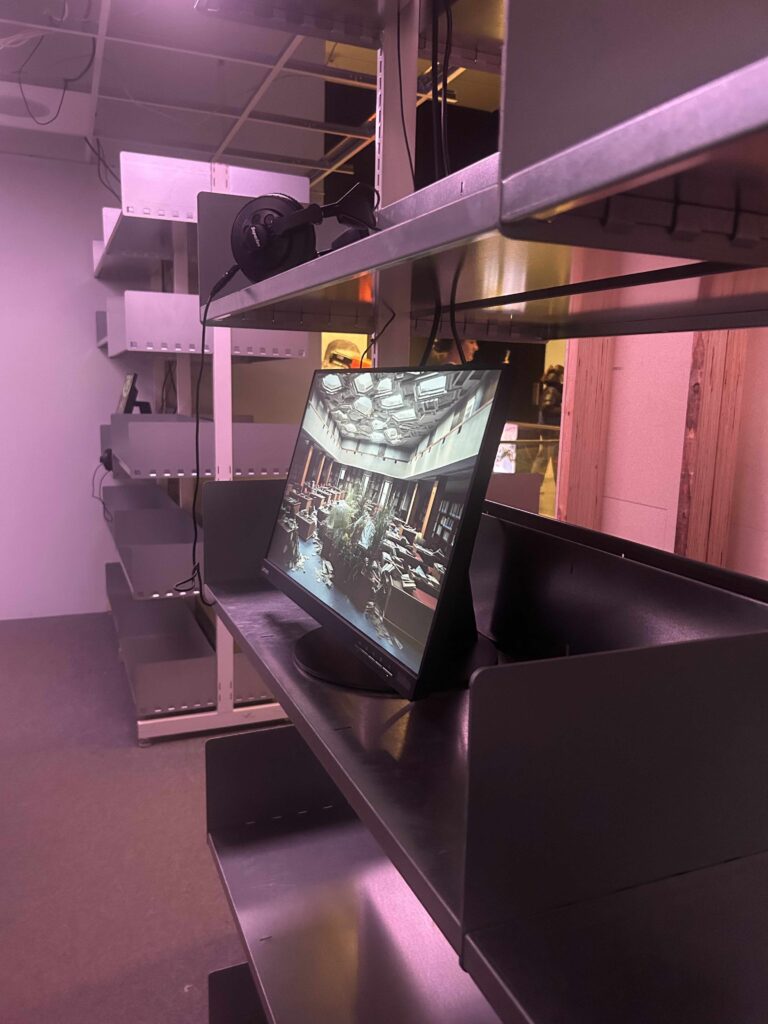One of the great challenges—and opportunities—of our age is the pursuit of digital wisdom. To thrive in our digitally enabled and enhanced information environment, we need to learn how to design and use digital information and communication technologies (ICTs) wisely so that we may become wiser. Right now, this includes discerning how AI may be integrated wisely into our lives and world. Libraries have an important role in creating a better information environment for human as well as artificial agents.
The Role of Libraries
Our emergence as a species is connected with our capacity for reflective attention. The ability to discern information in our environment and to think about it reflectively and imaginatively—instead of reflexively and automatically—set us on a trajectory that resulted in the creation of complex information societies. As we became dependent on the ancient ICTs of writing and textual artifacts, libraries were developed in diverse contexts to enable the discovery, use, creation, and sharing of knowledge.
To manage attention and information, libraries begin with an intention to configure an intellectual ordering of reality represented by textual expressions of knowledge. This goal, defined by particular communities, involves the selection and collection of texts judged worthy of attention. It also involves the mediation of access to this collection—as well as the broader context for discovery a library curates—through social and technological systems that enable human agency within an information environment.
Library intentions, selections, and mediations have changed and grown in complexity as ICTs have changed. The digital transformation of libraries—the integration of digital ICTs into library resources, services, and spaces—has been underway for decades. Libraries automated many technical operations in the 1960s, including cataloging, acquisitions, resource management, and circulation. In the 1970s, through collaborative consortia and networked computers, libraries developed automated processes for information exchange. Libraries created new automated discovery and retrieval services through online public catalogs and remote databases in the 1980s. By the end of twentieth century, libraries were providing online access to local as well as global resources. As they were digitizing information resources and services, librarians also developed the concept and practice of information literacy—which enables people to identify information needs and find, evaluate, and use information to fulfill those needs. Over the last twenty years, digital resources, services, and spaces have become thoroughly integrated into most libraries.
Today, libraries are being rapidly and radically transformed by new automated and artificial intelligence technologies—technologies that will profoundly change how people discover, use, create, and share information. A generative pre-trained transformer (GPT), which predicts plausible responses to requests based on past language patterns, is a significant AI technology that is already changing how people engage with and think about information. Many libraries are exploring how this technology may be used to advance knowledge discovery and creation. If wisely integrated into libraries, this technology could significantly augment human attention and agency. The digital wisdom needed to realize that goal begins with reflection on a number of ethical questions.
Information Ethics and GPTs
For several decades, the field of information ethics has explored various ethical issues to assess the impacts—as well as guide the implementation—of new and emerging ICTs. An instance of a GPT, such as ChatGPT, touches many (if not all) of the concerns of information ethics.
Consider, for example, the following issues and questions.
- Authenticity: Does ChatGPT provide meaningful information or rather false information (misinformation)? ChatGPTs information sources are obscure, but it is clear not all of them are good. Additionally, the current version of ChatGPT does not always provide accurate information and is well known for its tendency to fabricate or “hallucinate” misinformation. OpenAI warns that, “While we have safeguards in place, the system may occasionally generate incorrect or misleading information and produce offensive or biased content. It is not intended to give advice.”
- Access: Is access to ChatGPT equitable? This question concerns not only access to the technology itself, but also to the technologies and skills needed to use it well. At this point, the business model for ChatGPT’s creator OpenAI is not clear or stable. Many GPTs are commercial products and require user contributions of personal data as well as subscriptions for advanced models. Best practices for using ChatGPT are, at best, provisional.
- Diversity: Is ChatGPT inclusive of diverse perspectives? Given the lack of transparency around the texts used to train ChatGPT, as well as about human interventions meant to mitigate bias and bad information (or malinformation), it is unclear how diverse and inclusive ChatGPT is. There are questions about censorship, too, as different groups call for the exclusion of certain perspectives from their information environments.
- Property: There are many open questions about ChatGPT and copyright and intellectual property rights—about ownership rights of the content on which ChatGPT is trained, on who owns its outputs and the content created in connection with its use, and about how cases for fair or transformative use will be defended when content is automatically and cryptically generated.
- Privacy: How does ChatGPT access, protect, and use personal information? OpenAI warns that, “Conversations may be reviewed by our AI trainers to improve our systems” and, further, advises against sharing “any sensitive information in your conversations.” If you ask Chat GPT about privacy, you will get responses that promise anonymity and encryption but caution that “no system or service can guarantee complete security and privacy.”
- Security: Does ChatGPT protect people from—or expose people to—online harm? There has been at least one case in which users’ questions were publicly exposed. If you ask ChatGPT how secure it is, it asserts that user data is restricted to “authorized personnel” and that OpenAI has implemented controls to prevent unauthorized access to or misuse of user data.
- Community: Does ChatGPT foster harmonious relations among people, help cultivate citizenship, and serve the common good? When I asked ChatGPT how it serves the common good, it claimed a number of positive applications: creating mental health chatbots; developing interactive learning tools to help students learn and retain information more effectively; generating virtual assistants to help people with disabilities access information and services more easily; and analyzing and synthesizing large amounts of data to help researchers in fields such as medicine and environmental science make new discoveries and insights. ChatGPT acknowledges it also can cause social harms: it can be used to lie and slander, amplify biases and inequities, cheat and steal, disrupt relationships and jobs, and much more.
GPTs have the potential to enhance teaching, research, writing, coding and all the other work we do to process and act on information. But the intentions, selections, and mediations of GPTs need to be critiqued, governed, and reformed further to ensure that human attention and agency may be helped rather than harmed.
From Information to Wisdom
Libraries have always used ICTs to help people attend to and work with information. Through their intentional approaches to information, their selection of information resources, and their mediations of information access and use, libraries have cultivated human attention and agency to augmented human intelligence for millennia. Now, this work includes automated information processing and artificial agents. Increasingly complex forms of AI will continue to transform libraries and our information environment. Drawing on their histories and experiences of technological adaptation and ethical practice, libraries are well positioned to lead digitally wise social and technological transformations with AI.
For an introduction to information ethics, see Foundations of Information Ethics, edited by John T. F. Burgess and Emily J. M. Knox (ALA Neal-Schuman, 2019).


